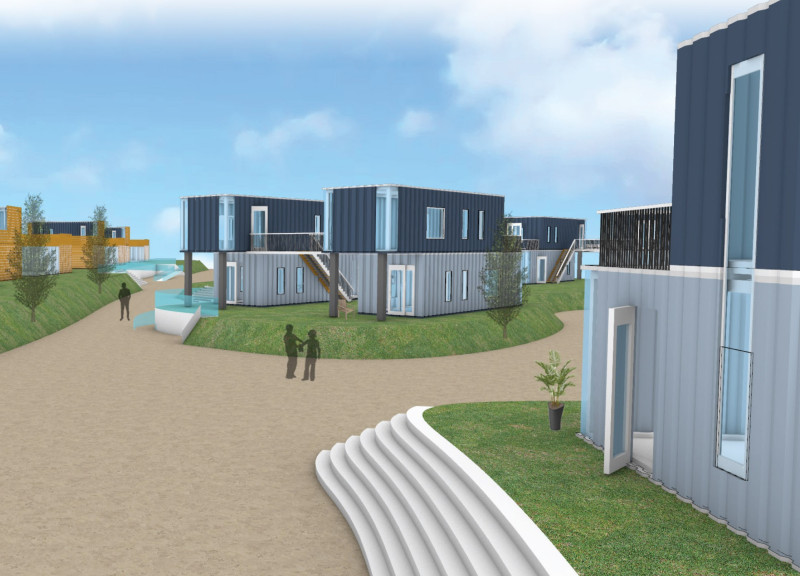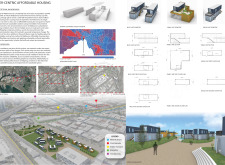5 key facts about this project
The project presents a user-focused approach to affordable housing in Melbourne, Australia. The city has seen a steady increase in its population since 1950, leading to a pressing need for more accessible living spaces. The design responds to this growing demand by integrating shipping containers as a core element, offering a sustainable solution to the housing crisis.
Spatial Configuration and Community Interaction
The layout emphasizes the importance of community engagement. Units are arranged to encourage residents to interact with one another while maintaining a balance between private and shared spaces. This thoughtful spatial design enhances the experience of living in the community. By providing common areas, the design nurtures connections among residents and fosters a sense of belonging that is vital in urban living.
Sustainability through Material Reuse
Shipping containers are used as the primary building material, illustrating a commitment to sustainability. Repurposing these containers aligns with modern ecological practices, as they offer a solid structure suitable for Melbourne's climate. The inherent insulation of shipping containers helps maintain comfortable indoor temperatures throughout the seasons. This approach not only reduces waste but also promotes a practical and environmentally responsible way of building.
Accessibility and Urban Integration
Located in an underused central area, the design improves access to vital services such as public transport, schools, and shops. The layout supports walkability, which is crucial for residents’ mobility and ease of access to everyday needs. By integrating housing units with the existing urban framework, the design strengthens the link between the community and its resources. This consideration ensures that residents can easily access essential services.
Innovative Architectural Response
The design serves as an effective response to the housing challenges in Melbourne, focusing on affordable and sustainable living. Through clear architectural strategies, it tackles issues of density and accessibility while promoting a sense of community. The use of shipping containers provides practical living spaces and contributes to the overall character of the development, showcasing a relevant approach to current urban needs.



















































